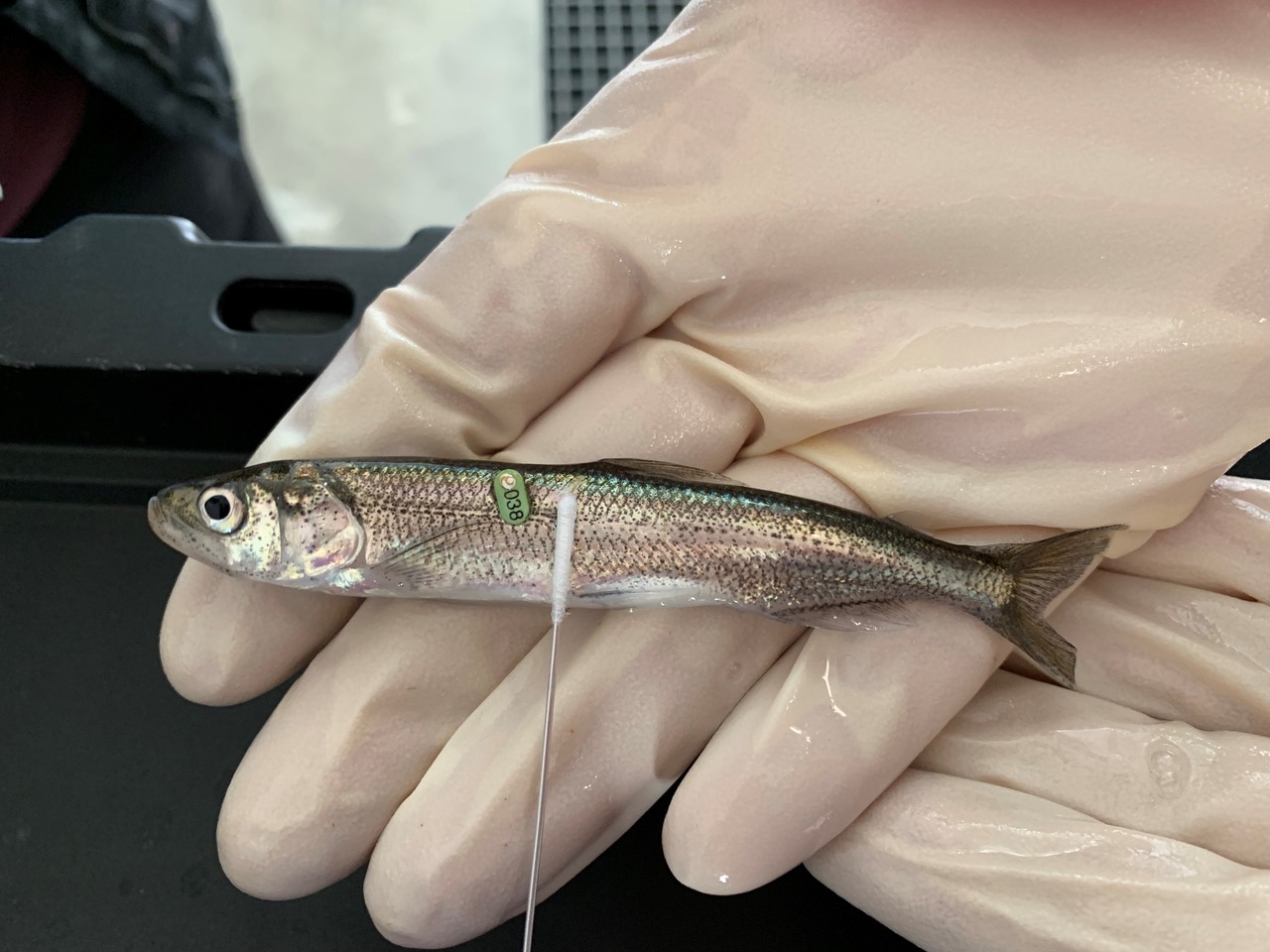
The CRISPR technique used to edit DNA has been formulated into a tool that can distinguish between similar-looking California fish species for conservation research. Called SHERLOCK (Specific High-sensitivity Enzymatic Reporter unLOCKing), the tool can tell the difference between species with speed and accuracy. Better yet, it is both inexpensive and can be run while researchers are in the field.
“It puts the power in the hands of the field biologist to make the most informed decision versus waiting sometimes days or weeks for lab results,” says Melinda Baerwald, an environmental program manager with the California Department of Water Resources.
Traditionally, scientists wishing to verify the identity of a salmon or a smelt had to send samples of fish tissue to a lab, then wait for results. The delay is particularly problematic for those working with listed species, who are only permitted to “take” (handle or kill) a certain number of individuals. “You can have no idea that you already reached your take limit a couple weeks ago,” says Andrea Schreier, an adjunct associate professor in the Department of Animal Science at UC Davis.
As an alternative, Schreier, Baerwald, and colleagues adapted a molecular technique created for medical diagnostics to species identification for conservation purposes. SHERLOCK links CRISPR’s power to detect a customizable stretch of DNA with a fluorescent reporter that indicates results.
As a proof of concept, the scientists used SHERLOCK to identify three smelt found in the San Francisco Estuary: federally threatened Delta smelt, California threatened longfin smelt, and introduced wakasagi. These small, silvery fishes are tough to tell apart, especially as juveniles. SHERLOCK was able to correctly identify each species within 30 minutes using the glow of a fluorescent reporter molecule, the scientists report in the journal Molecular Ecology Resources. A flow strip method akin to a pregnancy test took 40 minutes. The tests were also able to distinguish the smelt from genetic material taken from 27 other fish common to the estuary.
The researchers used mucus swiped from the side of each fish as sample material, making the test a noninvasive way to identify fish. The test reaction also happens within a single test tube at human body temperature. Results can either be eyeballed in the case of the test strip, or detected with an inexpensive and portable fluorescence reader.
More recently, the scientists have used SHERLOCK to distinguish among the estuary’s different runs of Chinook salmon, all of which look identical. Before, scientists have typically used an unreliable “length at date” measurement to identify fish from threatened versus non-threatened runs while in the field.
Big plans to use the tool to conserve California’s salmon are already afoot. Baerwald says, “SHERLOCK has the potential to change how we routinely assign Chinook run type, enabling it to be done more accurately and efficiently.”
The tool could also be used to locate Delta smelt in various corners of the Estuary, aiding efforts to count and sample this declining and elusive fish. The nearly instant results obtained from SHERLOCK also have the potential to enable real-time adjustments to the operations of the Delta diversion pumps, sampling locations during species surveys, and many other activities.
In theory, SHERLOCK should work with any organism, not just fish. The researchers are now adapting the technology for DNA found in environmental samples of water or soil (eDNA). While slightly more complicated to conduct, an eDNA version of SHERLOCK could detect whether a given species is in the vicinity. They will be working with US Fish and Wildlife Service to detect the presence of California tiger salamanders and tadpole shrimp in vernal pools, and DWR and California Fish and Wildlife to detect invasive species such as quagga mussels and nutria.
Schreier and Baerwald are already fielding inquiries from conservation researchers as far away as Africa.
Top Photo: Swabbing the side of a tagged smelt, image courtesy Alisha Goodbla/UC Davis.